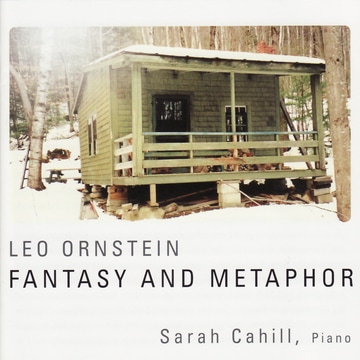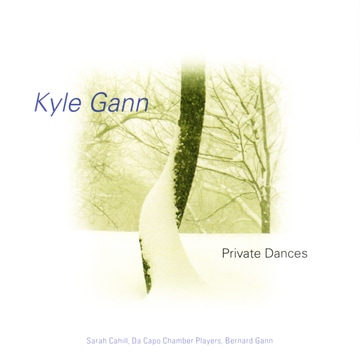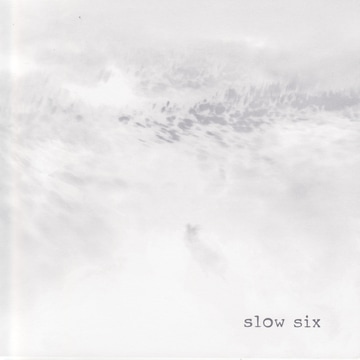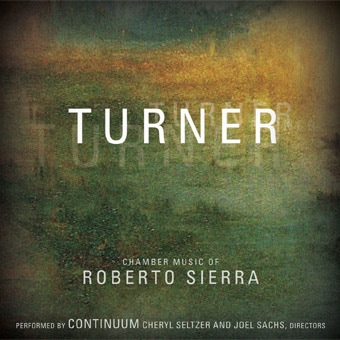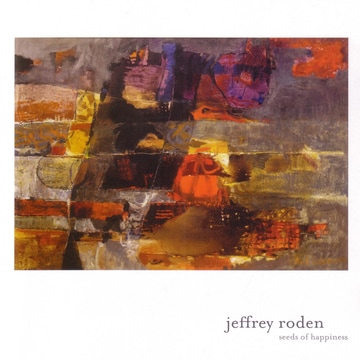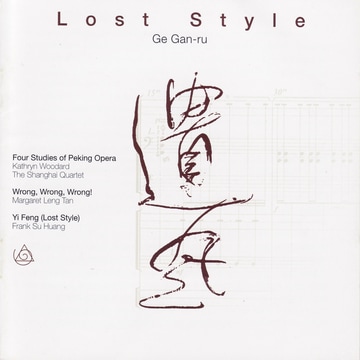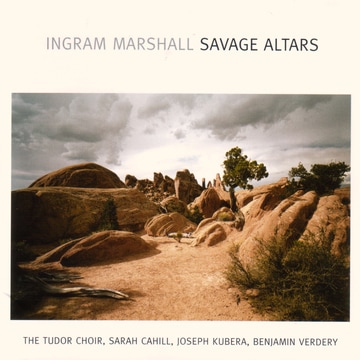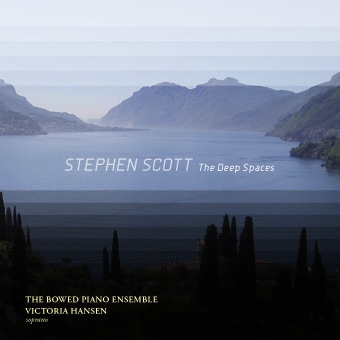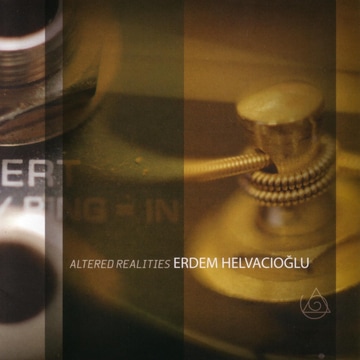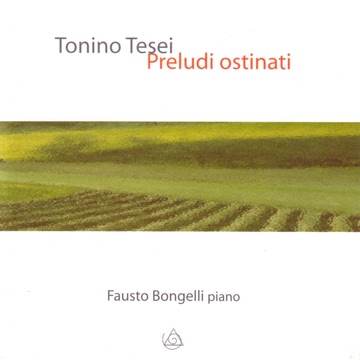|
Sarah Cahill, piano
These fifteen works for piano reveal a composer in his 70s and 80s exploring romanticism, improvisation, and a remarkable range of pianistic sonorities. All but one of these compositions are first recordings. At the beginning of the 20th century, Leo Ornstein was a radical “ultra-Futurist” composer-pianist who shocked his audiences with clangorous, wild works for piano. At the height of his fame he retired from the stage to devote himself to composing. Over the next seventy years, before his death at the age of 108, Ornstein composed a startling range of piano music. Severo Ornstein, his son, has collected and printed the scores, which are available free of charge at www.leoornstein.net . Born in the Ukraine in 1893, Ornstein emigrated to the Lower East Side of New York in 1907. In his twenties he toured the world as a radical piano virtuoso and his own compositions were compared to Schoenberg and Scriabin. One of his students at the Ornstein School of Music in Philadelphia was another American iconoclast, John Coltrane. Among the most interesting features of Ornstein’s compositional language is that it is not part of any school or movement. It is almost as though it is unrooted in history. Romantic lyricism coexists with complex, polyrhythmic, dissonant, or atonal music, often in the same piece. The pianist Sarah Cahill has devoted eight years to interpreting Ornstein’s later, unknown compositions, and worked extensively with Severo on the manuscripts. He suggested the selection of pieces for this recording. In 2000, Cahill visited the still lucid 107-year-old Ornstein in Green Bay, Wisconsin. Her playing achieves the spontaneity of improvisation yet remains faithful to the written note. Available here: iTunes Private Dances
Performed by Sarah Cahill, piano Da Capo Chamber Players – violin, cello, piano, flute, clarinet Bernard Gann, electric bass Kyle Gann (b.1955) is a composer whose music inevitably is structured with an array of metric, harmonic and melodic ideas and strategies that would seem to guarantee it to be beyond listenable in its complexity. However, the opposite is in fact what the listener receives- the work is deeply felt, lyrically clear and driven by song. Gann is also known to the musical world as an author and critic, and teaches in the music department at Bard College. Private Dances (2004) is so hot, so longing with yearning, so lonely with the blues, so salacious in its undressing of the unsuspecting listener, that it could properly carry a Warning ! sticker. In six movements – sexy, sad, sentimental, sultry, saintly, swingin’. The pianist, Sarah Cahill, leaves you, the listener, with nothing – she took it all. This piece is what was going on in the mind of the guy at the end of the counter in the E. Hopper painting, Nighthawks. Hovenweep, performed by Da Capo Chamber Players, is centered on channeling the spiritual world of the Anasazi civilization that predated the Judeo-Christian world and was centered in what is now the Utah-Colorado border. Time Does Not Exist (2000) is a tour de force for solo piano that evokes dream states through melodies that are different lengths and that overlap, die out, and reappear. It is inspired by the comment of Sigmund Freud- ‘in the unconscious, time does not exist’. The Day Revisited is a chamber work of microtonal virtuosity in a 29 pitch scale harmonically magnetized by a D drone, the end result is a kind of floating and wandering feeling, of calmness and languor. On Reading Emerson (2006) is an homage to Emerson’s practice of taking a series of ideas and issues, then juggling them through paragraphs in a sometimes logical and sometimes nearly whimsical melding of diverse and contrasting elements. The musical effect is of a deeply considered and unhurried gaze out of a window, possibly onto a winter woods. Available here: iTunes Nor’easter
Violin, viola, cello, guitars, baritone guitar, Rhodes, software, computers The intimacy of strings and piano combine with rock and roll’s electric guitars and fender Rhodes within a storm of interactive computer textures to create a unique and powerful listening event. There is no musical group today that compares to the Brooklyn based Slow Six. Since the beginning, their compositional detail, instrumental prowess, and live computer-music instruments separated them from other electro-acoustic troupes. Their openly emotive, culturally accessible music spoke to an audience far wider than the high-art New Music scene. Yet both industries have called the band's sound their own: Time Out New York declared their debut LP one of the Top 10 classical recordings of 2004 and ASCAP featured them in their 2005 Thru The Walls Showcase. The same record was Stylus Magazine's album of the week in August 04 and has received countless praise from international pop music publications and radio spots. John Diliberto of PRI's Echoes Radio Program declared "Arvo Pärt meets King Crimson". Lush video landscapes and frequent collaborations with friends Anemone Dance Theater further pull Slow Six from any specific music scene. Yet their spell-binding sound the New York Times described as "flecked with white-heat urgency" remains completely immersive and unmistakable. This latest release "Nor'easter" presents their most ambitious musical vision to date. Their amplified violins, viola, 'cello, electric guitars, fender rhodes, piano, and software instruments now combine for a new language of experimental instrumental storytelling, remaining physically immersive and emotionally charged. Each work presents its own evocative landscape, guiding listeners through inescapably personal and spellbinding electrified sonic adventures. The intimacy of strings and piano combine with rock and roll's electric guitars and fender rhodes within a storm of interactive computer textures to defy cultural pigeonholing. This is a new sound free of "cross-over" conceit—simply the sound of a new native musical space, a new generation of distinctly American music. A product of the indie-rock's DIY aesthetic, Slow Six was assembled by word of mouth, outside of any music school machine, writing and rehearsing in bandleader Christopher Tignor's self-built Greenpoint storefront loft. After putting on their own shows of this through-composed music and video at NYC's finest rock clubs and performance venues, the NYC Slow Six audience has grown formidable, cutting across culture boundaries, lifting up this new voice rising from their own ranks. Available here: iTunes HDtracks Turner
Continuum-flute, clarinet, piano, cello, violin, soprano Fervently committed to preserving his musical heritage, as a young man Roberto Sierra (b.1953) began to assimilate elements of the folklore and popular music of the Caribbean. His evocation of that musical culture is always free and imaginative. His music shares the multi-layered qualities that characterize two composers who are dear to his heart, his former teacher Ligeti and the American genius of the player-piano, Conlon Nancarrow. The melodic layers are frequently differentiated temporally, with each layer moving at a different speed. Such an approach to time gives his music depth and a fascinating compositional organization. In recent years, the Afro-Caribbean component of his music has often been more stylized, and has blended into his general language. While many pieces are extraordinarily complex, Sierra's superb instincts and deep musicality assures his performers that the gigantic task of learning his music will be rewarded by an old-fashioned sensuous, sonic pleasure that reaches out to grasp the audience. This CD gives a picture of the breadth of his recent chamber music. Available here: iTunes seeds of happiness
jeffrey roden, bass seeds of happiness on awakening i rise in the stillness in surrender and without struggle to the sound of joy and the certainty of my steps a radiance where clouds become choirs the movements and poses that my labor and breath brings to these forms, shapes, and silences a will without reason naked in faith These 26 pieces for 1961 Fender Precision Bass are comprised of two sets of miniature and minimalist cycles, recorded entirely over two separate days in Los Angeles area studios; each contains the briefest treatment that Roden could manage to convey the feelings and sensations at hand; they are as finite and elusive as leaves on a tree, as pearls on a string; a kind of melodic meditation—there is an idea, seeds, flowers... a kind of a musical seed catalogue in a med/mex ambient light, with a socal samba lurking beneath, an offering for equilibrium. Every note that is heard on the record was played live. The principle tracks of thematic material were recorded as one whole performance and the subsequent background tracks were then overdubbed without the use of loops or other devices. This record is a summation and a beginning. It required patience and faith to be made. There were many moments when it seemed that it would never be completed. Now that it is finished, it is inconceivable why this was so. What purpose is ever served by struggle. The answer is obvious, like all answers; because it was necessary. Available here: iTunes HDtracks Lost Style
Shanghai Quartet with Kathryn Woodard, piano Margaret Leng Tan, voice and self-accompanied toy orchestra Frank Su Huang, cello Emotionally gripping works, they both seduce and pummel the listener. --The New York Times The three compositions on Lost Style are indicative of the extraordinary compositional voice of Ge Gan-ru, China's first avant-garde composer. Born in 1954, Ge's life journey follows the now familiar path trodden by the generation of Chinese artists who came of age in the 1970's. As a teenager, he was repatriated to the countryside for re-education during the Cultural Revolution, then came the move to New York in the 1980's, a doctoral degree from Columbia University and since then, a steadily burgeoning career. The opening work, "Four Studies of Peking Opera" (2003), is a large-scale essay in four movements: "Prologue", "Aria", "Narrative" and "Clown Music". Here, the piano serves primarily as a modern-day incarnation of Peking Opera's percussion component where piano strings are variously manipulated to render gongs, cymbals, woodblocks and more. The string quartet's vocabulary includes snap pizzicati, slow microtonal glissandi, as well as sinuous melodic gestures suggestive of operatic and speech inflections. While consciously invoking the spirit of Peking Opera, Ge's treatment is, nonetheless, seldom overtly imitative and never naive or self-consciously folksy. Rather, it is an abstract, yet heartfelt homage to an ancient art form distilled through Ge's twenty-first century Chinese sensibilities. "Wrong, Wrong, Wrong!" (2006) was written for Ge's long-time collaborator, the celebrated pianist, Margaret Leng Tan. This melodrama for "Peking operatic style" voice uses as its text, the famous Sung Dynasty poem, "Wrong, Wrong, Wrong!" (1155), by Lu You. The multi-talented Ms. Tan explores yet another facet of her multi-tasking abilities—vocalizing while accompanying herself with a panoply of seventeen toy instruments. These range from real toy instruments such as the toy piano, toy harp and toy glockenspiel to the humblest one dollar soundmakers from New York's Chinatown, substantiating Marcel Duchamps statement, "Poor tools require better skills". The inimitable Ms. Tan sings, wails, whispers, moans and groans her way through Ge's increasingly anguished landscape. The result is a sonic and theatrical tour-de-force. The closing piece, "Yi Feng" (Lost Style) (1983), was written for and premiered by Shanghainese cellist, Frank Su Huang. His unedited 1983 recording made in the Shanghai Recording Studio is heard on this recording. "Yi Feng"'s premiere in Shanghai that year caused a scandal and was denounced as decadent and incendiary. 25 years later, the raw energy of deep explosions emanating from a deliberately detuned cello is no less terrifying, compelling us to remember a composer's lone voice speaking out in a stifled and rigidly ordered world. The most talented of the Chinese composers who had to endure the turmoil of the Cultural Revolution is Ge Gan-ru. --The Times (London) Available here: iTunes Savage Alters
The Tudor Choir, Sarah Cahill and Joseph Kubera, piano; Benjamin Verdery, guitar Savage Altars, from a concert performance by the Tudor Choir, derives its title from the Roman historian Tacitus' Annals Book I, which chronicles the Roman campaigns against the German tribes. They suffered a devastating defeat by the Cheruscan soldiers in the Teutobugian forest. Six years later, the remains, bleached out bones, splintered spears and debris, of three Roman Legions, were found, the whole of which was named "barbarae arae"—savage altars. Elements of the hymn Magnificat, and the canon "Sumer is i cumen in" are also interwoven in melodic and textual contributions. This was written on the eve of the first Gulf War under Bush I. Authentic Presence addresses a continuous state of spiritual mindfulness and was unconsciously inspired by the civil rights anthem, "We Shall Overcome". Five Easy Pieces are a kind of homage to Stravinsky and were made for no other reason than for having fun. Soe-pa, the Tibetan word for patience, is for solo guitar with digital delays and loops. It is a more formal exercise in composition that involves the interplay between live and electronic media. —Ingram Marshall Available here: iTunes HDtracks Deep Spaces
The Bowed Piano Ensemble, Victoria Hanson, soprano The Deep Spaces, the most recent in my series of bowed piano compositions, is a fantasy song-cycle celebrating the power and grandeur—evoked by poets and composers over two millennia—of one of the world's most dazzling and enchanting locales: Lake Como, surely the brightest jewel in the crown of alps and mountain lakes that adorns Italy's far north, just below Switzerland. The song texts, set for soprano soloist with the ensemble serving as accompanying orchestra (and, occasionally, chorus), are taken from writers as distant in time, culture, psychology and aesthetic stance from one another as Pliny the Younger, aristocratic native of Como and chronicler of many aspects of Roman life in the first and second centuries A.D., William Wordsworth, whose poetry celebrates both the Lake District of his native England and the Italian Lake District he loved, and Pablo Medina, a twenty-first century poet and novelist of Cuban ancestry residing and teaching in New York. Listeners may also recognize musical themes and motives I have borrowed from composers linked to Como and the Italian mountains such as Liszt and Berlioz, weaving them together with my own melodies and textures. What ties all of these artists together is their attraction to and artistic connection with Lake Como and, more generally, Northern Italy. The Bowed Piano Ensemble was founded at Colorado College in 1977, has evolved into a small orchestra whose wide range of sound colors and textures are all coaxed from one open grand piano by ten musicians wielding nylon filament, horsehair, hand-held piano hammers, guitar picks, and other devices. This evolution may be traced from the simple bowed sounds and musical structures heard on our first New Albion recording, New Music for Bowed Piano (NA 004 LP, NA 107 CD) through the more complex forms and playing techniques of Minervas Web/The Tears of Niobe (NA 026) and especially Vikings of the Sunrise (NA 084). --Stephen Scott, September 2006 Available here: iTunes Altered Realities
Erdem Helvacioglu, guitar and live processing Altered Realities is an album of solo acoustic guitar and live electronics. All of the compositions were recorded in real-time, directly to DAT (Digital Audio Tape) without any overdubs, mixing, editing, post-processing, or the use of previously recorded material. All of the textures were created based only on the acoustic guitar signal with no other sound source used during the recording. Within these textures, there are long sustaining single notes, beautiful shimmering chords and rhythmic clusters. During the making of this album, Ovation Custom Legend 1869 acoustic guitar, TC Electronic Fireworx multi effects processor, Behringer FCB1010 midi foot controller and the software Audiomulch were used. With no post-processing, no editing and no use of previously recorded material, the moment that is recorded is the moment that we hear on the cd. Available here: iTunes HDtracks Fausto Bongelli, piano
The music that I have written for the piano has always been suggested directly by the positions of my hands on the keyboard; the compositional imagination comes directly from the hands, with their muscles and tendons. More precisely, it is a game of reciprocal adaptation between the creative thought, the anatomy of the hands and the instrumental technique. Sei Marchigiane The title of this collection is taken from the region where I live: the Marche, in central Italy. Composers in the past centuries have given their dances names taken from nations, regions and cities - polonaises, ecossoises, siciliane, pavane or padovane (from Padua), tarantelle (from Taranto) and napolitane (from Naples). I am interested in folk music, not because I can quote themes or because I want to write music that is based in a folk language, but rather in order to renew and enrich my compositional style, the way Debussy did with the Javanese Gamelan or Ligeti with the African tradition. In my Sei Marchigiane, I've tried to reproduce the accompaniment of the concertina in the way it quickly alternates tonic and dominant chords. Also, I have attempted to recreate the flickering, the squabble, the weirdness, the frenzy of the old concertina players, who would play the instrument by ear in their spare time, as their job was in the fields (they were peasants). I heard them play as a child during country fairs. Tre Valzer In the Tre valzer I have used a compositional technique that Arvo Pärt would call "tintinnabuli style". I have harmonized the melody with only one chord: the tonic. The third "valzer" (that has as subtitle "dell'ultimo e del primo dell'anno" because was composed between December 31, 1998, and January 1, 1999) is a variation on a theme taken from the second movement of Pärt's Tabula Rasa. Preludi Ostinati In the twelve Preludi ostinati (Obstinate preludes 1999/2000), the rhythmical events happen in two layers: we have a fast uniform series of pulsations as a fundamental layer (ostinato) and an odd rhythmical module constantly changing in the overlapping layer. This technique allows me to create complex polyrhythmic structures. In all the preludes, a coda repeats the first section: the musical discourse is repeated not to resume it but in order to arrive at the end. The final chord, in which the keys are abandoned one after the other from the bottom to the top, is the characteristic ending of this whole collection of preludes. Available here: Groove |
New Albion Records, Inc.Archives
October 2010
|
